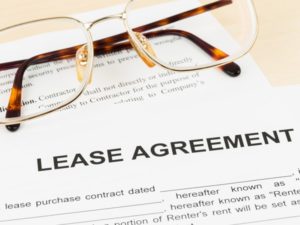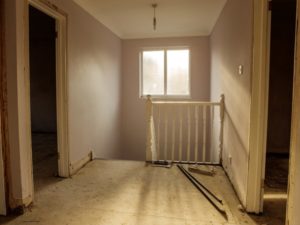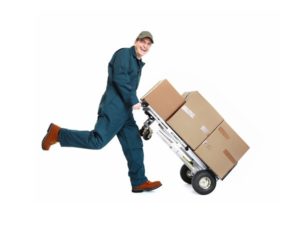Moving – it’s a word that’s dreaded by many. However, it doesn’t have to frighten you. By educating yourself on the nuances of moving – prior to encountering the situation – you can eliminate much of the stress that comes along with it.
Getting Your Security Deposit Back
Let’s start with one of the most pressing questions people have when getting ready to move apartments: “How can I ensure I get my security deposit back?” Because a security deposit is often equal to the first month’s rent, this is a very valid question. It can be worth as little as a few hundred dollars or as much as a few thousand. As such, it’s important to use the following tips. Not only will they help you get your current security deposit back, but they’ll also increase your chances of getting the next one back.
Anytime you sign anything, whether it’s a lease, business contract, loan agreement, or bill, you must read the fine print. Your lease with your landlord should clearly explain the termination process and how your security deposit will be handled. It will likely provide a list of things that can cause a breach of contract, as well as responsibilities that must be handled on your part before handing over the keys.
2. Always Take Thorough Pictures
It’s not uncommon for landlords and tenants to disagree over what damage was present upon moving in and what damage is present when you move out. In order to avoid getting in a he-said-she-said debate, it’s best to take pictures for proof. When you move into a new apartment, start by documenting the appearance. Take pictures of anything and everything and store them in a folder on your computer. Then, if you have any disagreements with the landlord, you can always return to those images for clarification. It’s also not a bad idea to take more pictures when moving out, so the landlord doesn’t try to track you down later and claim you caused damage.
The biggest problem most tenants and landlords have is deciphering between normal wear and tear and actual damage. And while the line between the two can often become blurred, there should be some clarification in the lease. Otherwise, normal wear and tear typically consists of things like small nail holes in the walls, faded paint, minor matting of the carpet, and tiny scratches on hardware and doors. Damage consists of things like broken windows, large stains on the carpet, pet damage, mold, and holes in the drywall.
Packing Up and Moving Out
Once you’re clear about how the security deposit reimbursement process works, turn your focus to packing up and moving out. Use these tips to make the process easier:
Moving always takes longer than you think. As a rule of thumb, always prepare for twice the amount of time. For example, if you think moving out will only take one afternoon, plan for an entire day. You’ll likely encounter small issues along the way, making an extra trip to the hardware store or cleaning up unexpected messes.
Boxes are cheap (and often free), so resist the urge to pack boxes to the brim and go a little lighter. You’ll be glad you properly packed boxes when it’s time to load and unload them from the truck. Along the same lines, always carefully wrap fragile items. It’s better to spend a few extra minutes packing than having to deal with broken items when you unload.
Whether it’s some kids down the street or a professional moving company, help is always needed when moving apartments. Not only do the extra bodies make the process go a lot faster, but they also allow you to safely move large pieces without injuring yourself or damaging walls.
Moving In and Unpacking
Finally, we’ve reached the moving in and unpacking stage. This is often the most exciting part of the move, as you finally get to situate yourself in your new place. However, don’t rush things here. Keep the following tips in mind and you’ll do just fine:
7. Start by Cleaning and Documenting
Before placing a bunch of boxes and pieces of furniture in your new apartments, start by cleaning and documenting its condition. While you’ll obviously want to clean it again after unpacking, this gives you a chance to get into hard-to-reach places. As previously mentioned, this is also a great opportunity to take pictures and examine anything that looks suspect.
8. Order Delivery Food
After a full day of moving, you’re going to get pretty hungry before you’re completely moved in. Regardless of whether or not you have good intentions to cook your first meal in your new apartment, go ahead and order delivery. This allows you to make better use of your time and offers a pretty good incentive for people to come over and help.
If you haven’t already done so, go ahead and call service providers to ensure things like cable, internet, water, and electricity are all up and running. The last thing you want to do is move in and wait a week or two for everything to get squared away.
10. Don’t Stress Out
Finally don’t stress out. Moving is a challenging and draining, but it’s not the end of the world. By following these tips, you can maximize your efforts and ensure the moving process is as cheap and easy as possible. Start planning today and you’ll be ready for your move in no time.










